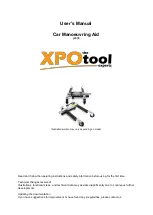
AUDIO STREAMS |
39
Presence Service
Once your Z/IP ONE is registered with the server, it checks in periodically to make sure that the server knows
about any IP address or other network changes that may have happened. Because of this, the server can keep track
of which Zephyr/IPs are currently online. The presence service allows you to see the state of the other Zephyr/IPs
in your phone book (or speed dial) list. This way, you can know if the Zephyr/IP you want to call is online before
you even dial.
The state information is updated a few times per minute to always keep the list up to date.
NAT Traversal
Many networks make use of network address translation (NAT) devices to get around the shortage of public IP
addresses (or even just to make devices less visible to the public Internet). In this case, the router will have the
public, or WAN, IP address that is accessible from the Internet. Devices on the local LAN have what are referred to
as ‘non routable’ IP addresses that are intended for local use only – generally in the 192.168.x.y or 10.x.y.z subnets.
NATs can be very useful, but they also make it difficult to reach devices that are behind the NAT. The ZIP Server
allows your device to detect when it is installed behind a NAT, and also what type of NAT is in use. This helps allow
the units to reach each other, even when both sides are installed behind NATs. See Appendix A for more informa-
tion on how NAT routers work.
There is no default port number used by TSCP. Rather, one is determined each time the Zephyr/IP connects to the
ZIP Server. For port forwarding to work, however, the Z/IP ONE’s listening port must be static. The ZIP Server
setup screen on the Z/IP ONE has a field for setting a static listen port for this purpose.
Media Relay Service
Not all NATs behave the same way. Some NATs are very restrictive, and go to great lengths to prevent data from
outside the network from reaching devices on the inside. This is a great security feature for PCs, which typically ini-
tiate connections themselves. However, it can create trouble for devices that are listening, waiting for a connection
to come in from the outside. The Z/IP ONE, together with the ZIP Server’s NAT traversal service can automatically
get through most types of NATs.
When both sides are behind very restrictive NATs (especially those referred to as “symmetrical”), it may not
always be possible to get through the NAT in a manner that allows the two end devices to communicate directly.
However, so long as each Z/IP ONE can communicate with the server, the ZIP Server can exchange the audio data
for them.
Direct communication between Zephyr/IPs is always preferred over using the media relay service. We offer the
option as a “panic solution,” should other methods fail to provide a connection. Units using a direct communica-
tion path have a lower end-to-end audio delay, less packet loss, and less jitter between packet arrivals.
If you find yourself behind a very restrictive NAT, but you have control over it (or can ask a network administra-
tor), then it is best to configure port forwarding on the NAT (this is also covered in Appendix A). This will allow
your Z/IP ONE to communicate directly with any other Zephyr/IP device without having to rely on the media relay
service. Since two Zephyr/IPs can always communicate if even one of them is behind a port forwarding NAT, it is
good practice for a Z/IP ONE at a studio or other fixed location to have its ports forwarded.
















































